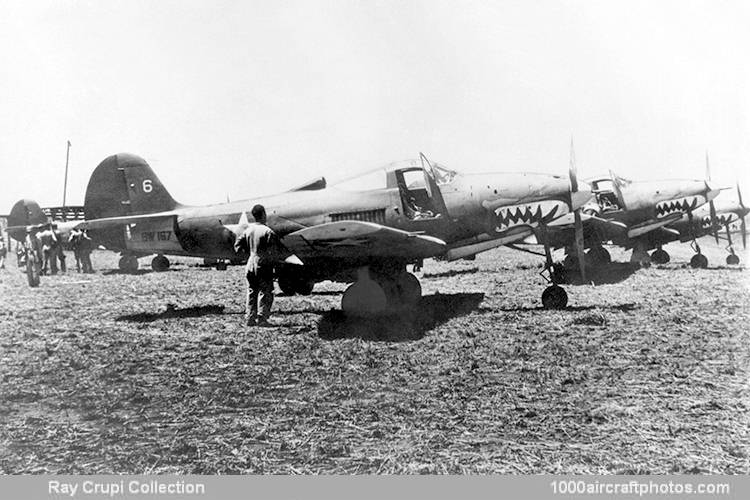06/30/2015. Remarks by Johan Visschedijk: "Of the 675 Model 14 Airacobra Mk.I fighters scheduled to go to the RAF under the British serials AH570-AH739, AP264-AP384, BW100-BW183 and BX135-BX434, 212 were diverted to the Soviet Union, 54 were lost at sea, and 179 were taken over as P-400s by the USAAF in December 1941 for emergency use in the South Pacific, retained their original British serial numbers and their three-color camouflage paint.
Over 100 P-400s, together with ninety P-39Ds, were dispatched to Australia to reinforce USAAF units in the Pacific between December 23, 1941 and March 18, 1942, one of the first operational formations in the area to receive them being the 67th Fighter Squadron. The P-400s and P-39Ds of the 35th Fighter Group's 40th and 41st Fighter Squadrons based at Port Moresby, New Guinea, had the task of intercepting Japanese attacks, but the official USAAF history was later to say: 'The Airacobra, even in a good state of repair, was unable to meet the Japanese fighters on equal terms.'
With the formation of the US 12th Air Force in the Middle East in the autumn of 1942, Airacobras saw service in the Mediterranean area with the 81st and 350th Fighter Groups and two squadrons of the 68th Observation Group. Their aircraft were diverted from a Soviet consignment, being P-400s and P-39D-1s. The latter designation was applied to the first 336 aircraft of an order for 494 Model 14As placed in June 1941 with Lend-Lease funds. These had a 0.787 in (20 mm) M1 cannon in place of the standard 1.46 in (37 mm) weapon, and were the first Airacobras to be fitted with the small dorsal fin fillet which was to become standardized. The remaining 158 machines on this order were completed as P-39D-2s which differed only in having uprated V-1710-63 engines and having a 2:1 reduction gear."
